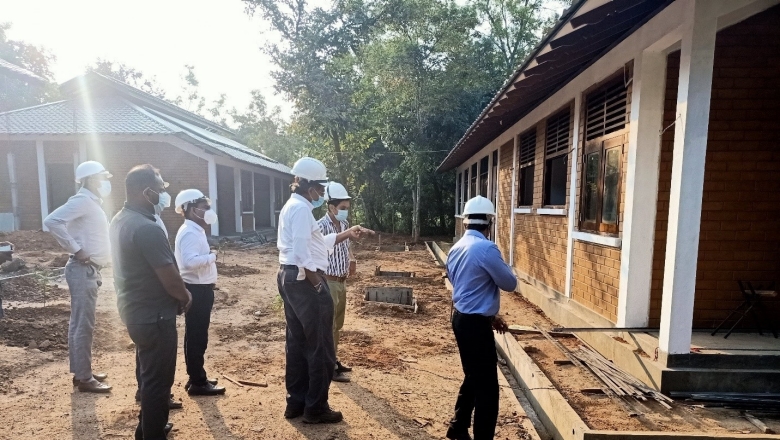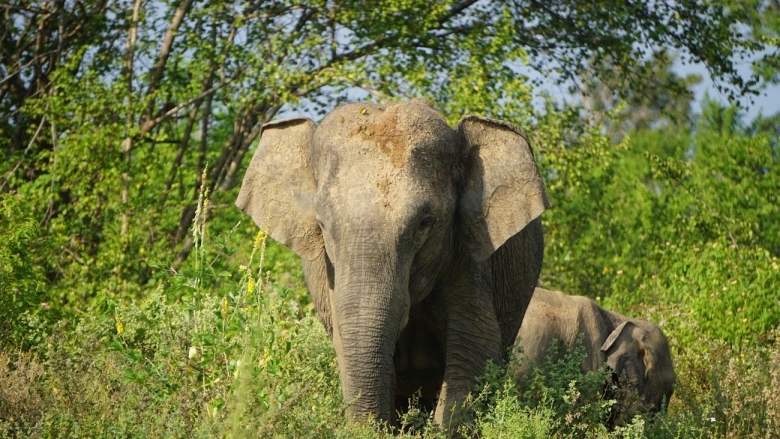Challenge
Despite its long history of conservation, integrated planning and management of land use, natural resources as a capital have been a challenge for Sri Lanka due to fragmented institutional responsibilities and overlapping mandates. Also, community-based models for managing natural resources sustainably are lacking. Poorly coordinated sectoral planning (agriculture, transport, power, urban development) leads to uncontrolled development pressures on the environment, degrading the ecosystems, and diminishing the potential to provide environmental services and renewable resources for the benefit of local communities and national economy.
Environmental decision-making in Sri Lanka has also been largely focused on mitigating the direct impacts of developmental projects avoiding more coordinated and upstream planning of the developmental activities. Jurisdictional controls over the land do not coincide with natural ecological boundaries, often resulting in uncoordinated interventions as highlighted, fragmentation of forests, natural habitats, and instances of increasing human-elephant conflicts.
Approach
ESCAMP’s strategy is to highlight that biodiversity and sustainable management of natural resources are developmental issues directly linked to reducing poverty and to economic growth. The project builds modern capacity to manage ecosystems, improves management of the forest and protected areas, tests a more integrated management of pilot landscapes, and supports livelihoods of the local communities. Modernizing institutional, technical and human capacity of the Forest Department (FD) and the Department of Wildlife Conservation (DWC) is going to ensure the sustainability of project-initiated activities and implementation of the strategic policies the project supported. Participatory approaches enabled the communities living adjacent to protected areas and forests to contribute to planning and use of natural resource and developing biodiversity-compatible, productive, and climate-resilient livelihood activities that also reduce the pressure on natural forests. A multi-stakeholder engagement approach, for example, was used in preparing the two landscape management plans Hurulu-Kawdulla-Kantale (HKK) and Sinharaja Forest Range (SFR) landscapes that cover 10 percent of the country’s area and affects more than 1 million people. It focused on integrating top-down planning with bottom-up participatory appraising of the activities, building community ownership and sustainability of the approach.
Results
- Two integrated landscape management plans were prepared with participation of different government agencies, non-governmental and community-based organizations, and more than 300 land-owning citizens. These plans outline a new management approach that aims at restoring the natural resources, environmental services through integrated decision making and planning.
- A total area of 290,000 hectares have been brought under enhanced biodiversity protection, targeting 350,000 hectares by the end of the project in June 2022. Professionally prepared management plans, afforestation and restoration activities, biodiversity conservation, boundaries demarcation, better protection of the protected areas, and community engagement activities have been implemented.
- Overall, more than 25,190 people, 51 percent of whom are women, have been direct beneficiaries of project activities supporting protection of lives and crops from human-elephant conflict, income-generating activities, job-training, and temporary community jobs.
- Some 9,300 people, 54 percent of whom are women, in communities adjacent to protected areas have benefitted from income-generation activities. Also, 7,800 people, of whom 48 percent are female, received trainings on livelihood improvement.
- Fifty-nine Community Action Plans (CAPs) have been prepared with the participation and consultation of respective communities ensuring economic viability, climate resilience, and biodiversity protection in selected activities. CAPs have supported 6,376 direct beneficiaries and 25,956 indirect beneficiaries so far.
- Supporting the human-elephant co-existence, 10 community-based village-erected fences have been completed in areas where human-elephant conflicts are intense. Village-level mechanisms to maintain these fences are agreed with communities supporting the sustainability and long-term benefits. Two Elephant Early Warning Systems have been successfully piloted in two villages in Kurunegala. These activities resulted in reduction in crop and property damages these areas by 90 percent with no human fatalities occurred.
- Thirty-two elephant collars have been placed to help determine the animals’ distribution through landscapes and their range patterns. This information is gathered, analyzed, and presented in a web portal which can be used by development decision-makers in planning development projects, such as highways to avoid and minimize fragmentation of their habitats.
- The Smart Monitoring and Reporting Tool (SMART) for enforcement is being used in the southern cluster of protected areas with significant improvement of the law-enforcement and protection activities.

Bank Group Contribution
The 5-year project was supported with a $45 million credit from the International Development Association (IDA), which was approved by the World Bank’s Board on April 25, 2016. At the request of the Ministry of Finance, the project was restructured in May 2021 with partial cancellation of $10 million towards Covid-19 recovery efforts.
Partners
ESCAMP is built on a strong partnership with key development and conservation partners in Sri Lanka’s forestry and wildlife sub-sectors - United Nations Development Program (UNDP), Food and Agriculture Organization (FAO), International Union for the Conservation of Nature (IUCN), Global Green Growth Institute (GGGI) and others. Periodic meetings are held with Ministry of Wildlife and Forest Conservation (previously with Ministry of Mahaweli Development and Environment and Ministry of Sustainable Development and Wildlife) ensuring the robust supervision, management, and coordination. The main implementing agencies – Forest Department (FD) and Department of Wildlife Conservation (DWC) – are the main governmental institutions responsible for managing the country’s forests and wildlife. FD and DWC utilized their extensive local level network for effective and efficient implementation of the field level project activities. Community-Based Organizations and communities adjacent to PAs support ESCAMP through sharing their local knowledge and by actively participating in planning and implementation – particularly in developing and implementing CAPs and installing community-based electric fences. In addition to financial support, Bank has extended its expertise in coordination, monitoring, and ensuring social and environmental standards.
Moving Forward
Following the request of the Forest Department, the project is currently supporting preparation of a strategic sectoral plan – Forestry Sector Masterplan 2021-2030. This plan is aiming to outline strategic directions of the sectoral development and appraise a dozen of investment programs for its first five years of the implementation. These programs will focus on building capacity for managing Sri Lanka’s forest landscapes sustainably, both for conservation and production purposes, restoring natural resources of the forest landscapes, developing rural communities, livelihoods and jobs, increasing plantation’s timber supply for the national economy and supporting small and medium enterprises and private sector.
Beneficiaries
Mr. Abeysinghe, a farmer, and the Treasurer of the Committee established to maintain the village electric fence.
Abeysinghe, a 50-year-old farmer from Wathupolagama, Kurunegala, says that during 1990s there were no human-elephant conflicts which started after 2000, and recently has elevated into a dangerous phase. There were 3 human deaths and many property and crop damages happened in recent past due to elephant attacks, and many were leaving cultivation. Under such circumstances, community village electric fence resulted in significant transformation in Wathupolagama. “Under the supervision of ESCAMP we – as a community together – built the electric fence and we maintain it as our own property. After 24 years I received the full harvest of my Undu (phaseolus max) cultivation, without using a single elephant shot” says Mr. Abeysinghe.
Ms. S.H. Bandumala, Conservator of Forest – Education, Forest Department.
Inability to secure adequate funding for staff training is one of the major problems faced by Forest Department. With the support of ESCAMP, FD was able to conduct 10 short-term trainings on disseminating technical and administrative knowledge on areas like indigenous species management, application of GIS, law enforcement, leadership, nursery management, etc. for 1000+ Range Forest Officers, Beat Forest Officers, Divisional Field Officers and Field Assistants. “Trainings had a significant impact on all the participants – particularly for Field Assistants, who otherwise wouldn’t get the opportunity to learn. Curriculum and the training material of the courses were well developed, we continued conducting training courses, independent from the project – for the interested candidates – such as staff of Mahaweli Development Authority – charging the cost for the program,” says Ms. Bandumala.
